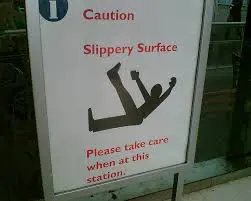The term slippage (from the verb “to slip”) refers to the difference between the expected price of a buy or sell order and the actual execution price. This article describes my experience with slippage in trading.
Slippage occurs in fast or illiquid markets
There are three trading situations in which you may experience price deviations (i.e. order executions that are usually worse than expected).
These situations occur during entries and exits:
- When you enter or exit the market using a stop order without a limit, there will be a deviation, or slippage, between the price you enter into your trading platform and the actual execution price.
- When you enter or exit the market with a market order, there will be a deviation, or slippage, between the last price you saw and the actual execution price.
- When you enter or exit the market with limit orders, there may also be a deviation or slippage, but it will always be in your favor.
Here are a few examples:
- A trader places a buy stop order for the EUR/USD currency pair at 1.3033 and receives an execution at 1.3035. In this case, the slippage is 2 pips.
- A trader plans to buy a DAX futures contract using a market order. The last price she saw was 14,205 points. She transmits her buy order to the market via her trading platform and receives an execution at 14,210 points. Here, the slippage is 5 points.
- A trader places a sell limit order for the AUD/USD currency pair at 0.8734 and receives an execution of 0.87342. In this case, the slippage is 0.2 pips in the trader’s favor. In practice, positive slippage occurs almost only with limit orders.

Slippage can be expensive for traders
In fast-moving markets, slippage may be larger than usual and can prove expensive for traders.
When markets move quickly, the difference between expected and actual order execution can be significant. This is especially true during or just after the release of important economic data, just after trading begins, and shortly before it ends.
Even in very liquid markets, such as GBP/USD, slippage can amount to 10 pips or more at such moments.
Traders need to take this into account in risk management. When backtesting trading systems, many traders also neglect the slippage factor or don’t calculate it realistically.
This omission can create a large, negative difference between the results of backtesting and live trading.
Significant slippage can also occur in illiquid markets.
These can be stocks that have little turnover, exotic currency pairs, or futures markets in which there is little trading.
A typical example often mentioned in this context is the market for orange juice futures, which are traded on the NYMEX.
The average trading day in this market sees trading volume of just 1,000 to 2,000 contracts.
If you place a market order at the wrong time, you may be in for a nasty surprise when you see the actual execution price.
Conclusion of this article on slippage in trading
As a trader, you must learn to live with slippage, which is a trading cost that has a direct impact on your income statement.
But you can reduce slippage if you use buy limit or sell limit orders when entering or exiting positions.
At the same time, you should avoid using market orders in fast-moving or illiquid markets.
If you have any questions about slippage or would like to comment on this article, please do so in the section below.
Read more: